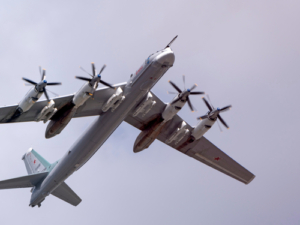Unraveling the Geopolitical Tensions: Ukraine’s Strategic Moves and Their Implications

As we dive deeper into the current geopolitical landscape, the ongoing conflict in Ukraine is unfolding in ways that make it evident we are witnessing a proxy war fueled by NATO interests. Recent military actions provide a stark illustration of this reality and underline the critical intersection of military strategy and economic forecasting.
A Bold Assault
On June 1st, Ukraine’s Security Service (SBU) executed a daring drone offensive on four Russian airfields, marking a pivotal moment in the escalating conflict. They targeted over 40 strategic bombers, showcasing a newly-developed drone capable of a staggering 3,000-kilometer range. This strategic strike not only demonstrates Ukraine’s growing military capabilities but also highlights NATO’s indirect involvement in a campaign aiming to statistically weaken Russia’s military operations.
Reports indicate that key airfields, such as Dyagilevo and the Olenya airbases, were effectively compromised. What makes this operation even more intriguing is the implementation of tactics that involved smuggling drones deep into Russian territories—demonstrating a level of sophistication in warfare that may alter the future landscape of armed conflict.

The Proxy War Unveiled
As the smoke clears, Ukraine has confirmed that “enemy strategic bombers are burning en masse in Russia.” This is not merely a military engagement; it signifies a broader strategy aimed not only at destabilizing Russia but also at removing military threats against NATO. By successfully neutralizing these bombers—like the Tu-95 and Tu-22M3—Ukraine has taken aggressive steps that point to a strategic agenda beyond local interests.
It’s crucial to recognize that these assets were not actively being employed against Ukraine, thus underscoring the "proxy war" narrative. This military escalation aims to prepare the battlefield for a potential NATO engagement, suggesting a far-reaching plan.
A Turning Point in Timing
Historically significant dates often reveal underlying patterns, and the timing of this escalation aligns interestingly with our Economic Confidence Model (ECM). On May 15th, a peace deal was on the table, yet by June 2nd, we witnessed a marked intensification of war activities. Researchers and analysts at Extreme Investor Network have consistently monitored these patterns and can confidently assert that the volatility in this conflict is poised to rise sharply.
Our models indicated that May would be a low point in tensions, while the months following are likely to usher in a phase of uncertainty that could culminate in widespread economic ramifications as we approach 2026.

What Lies Ahead?
Our robust forecasting models have targeted June as a catalyst for further escalation. Based on comprehensive data analysis, we warn that a shift towards heightened volatility is imminent, with potential implications for global markets and investor sentiments. Those who track these developments closely should prepare for capital controls that may materialize as early as August.
It’s vital for international investors and citizens, especially those in Europe, to take potential economic shifts seriously, including securing cash reserves and considering alternative investments that can withstand volatility. History has often taught us that in the face of geopolitical strife, the best defense is proactive engagement and strategic foresight.
Final Thoughts
As the conflict expands, it’s essential to keep abreast of these developments. Predictions made months or years in advance can rapidly shift due to on-the-ground realities. At Extreme Investor Network, we prioritize accurate and timely analysis, helping you navigate these tumultuous waters with informed choices.
Stay tuned for updates as we continue to monitor this complex geopolitical landscape and its multifaceted economic implications. After all, in today’s interconnected world, knowledge is not just power but also a safeguard against uncertainty.

